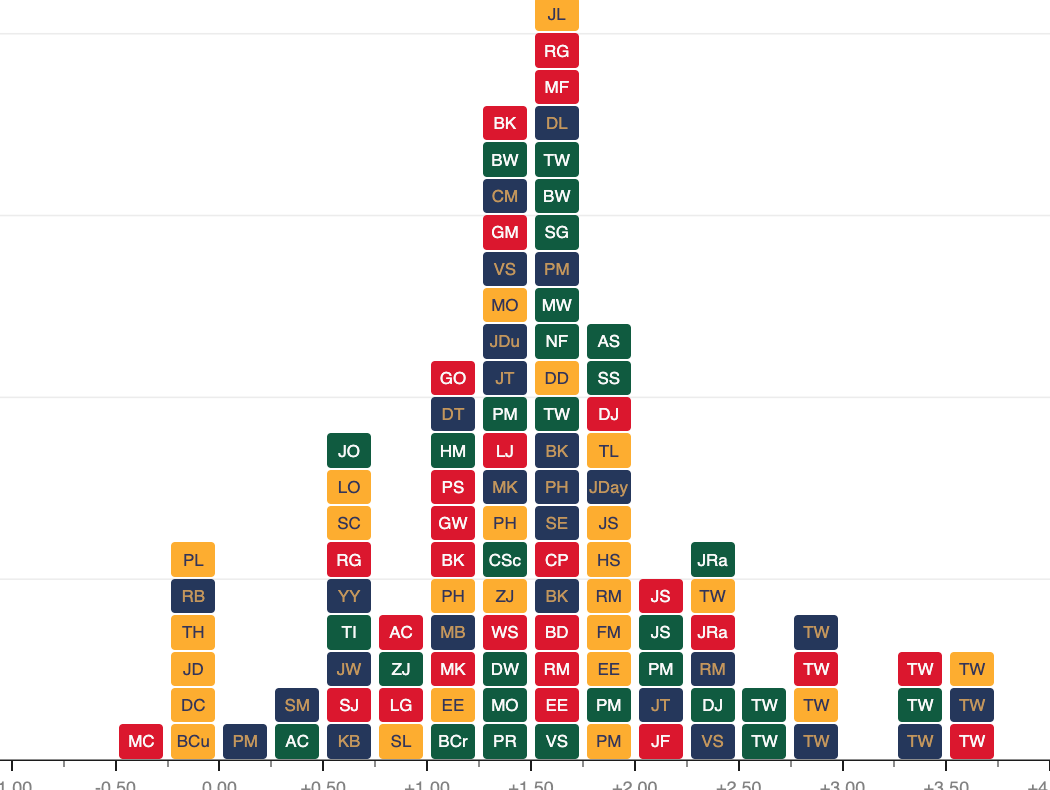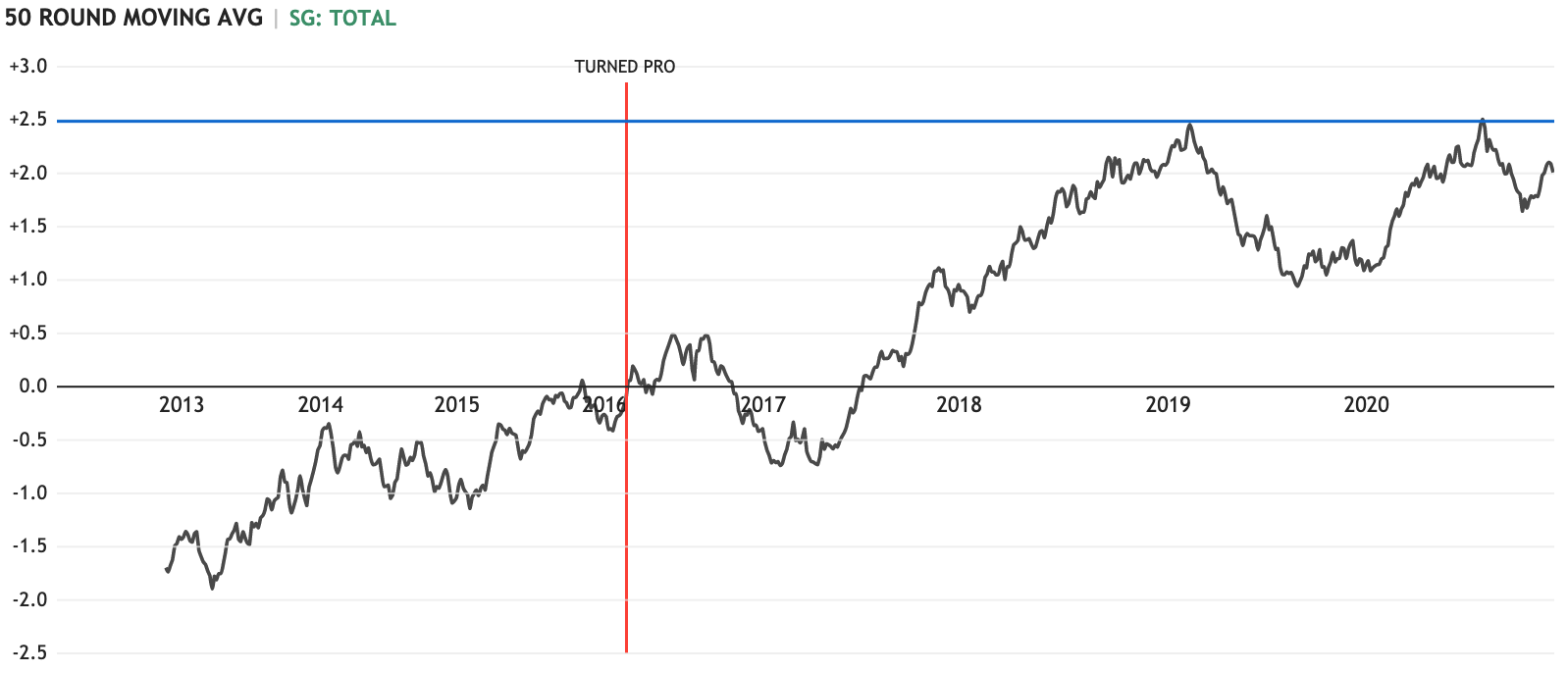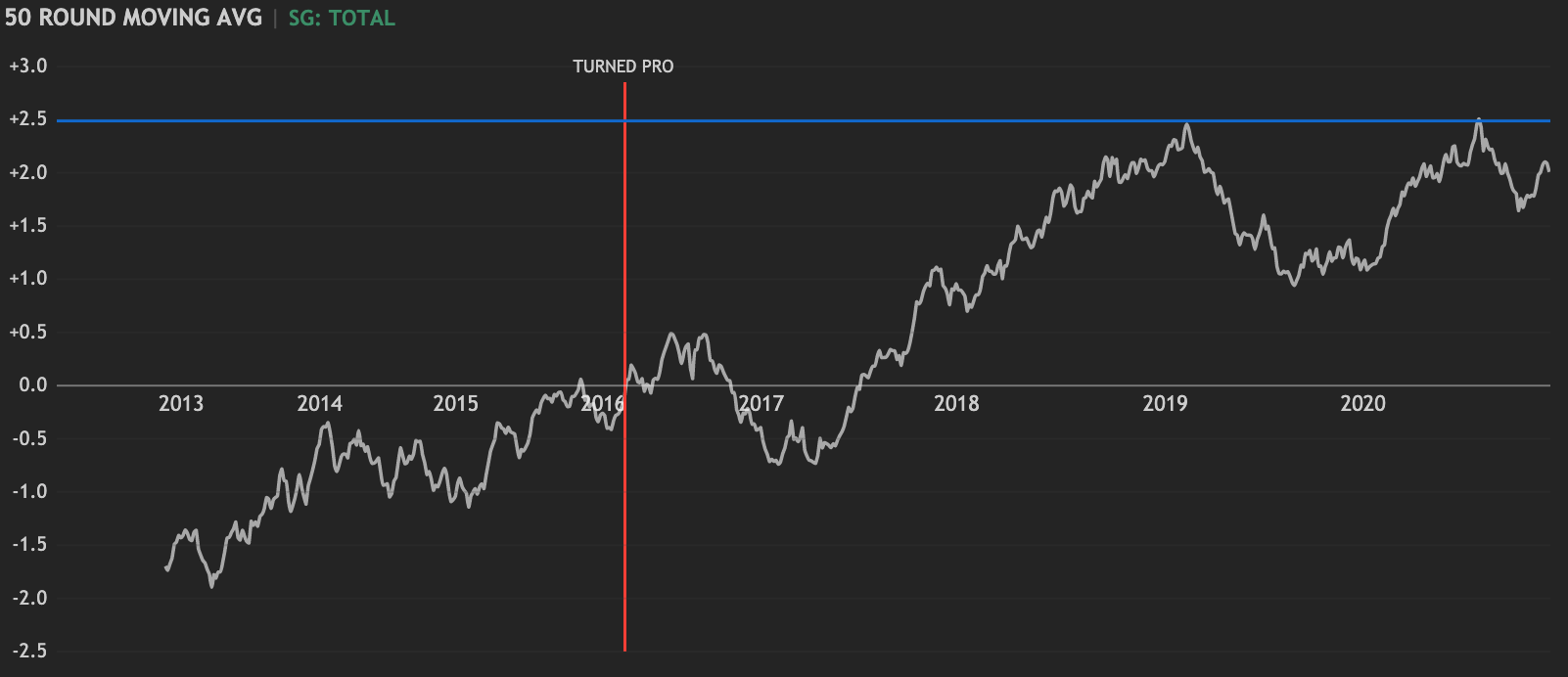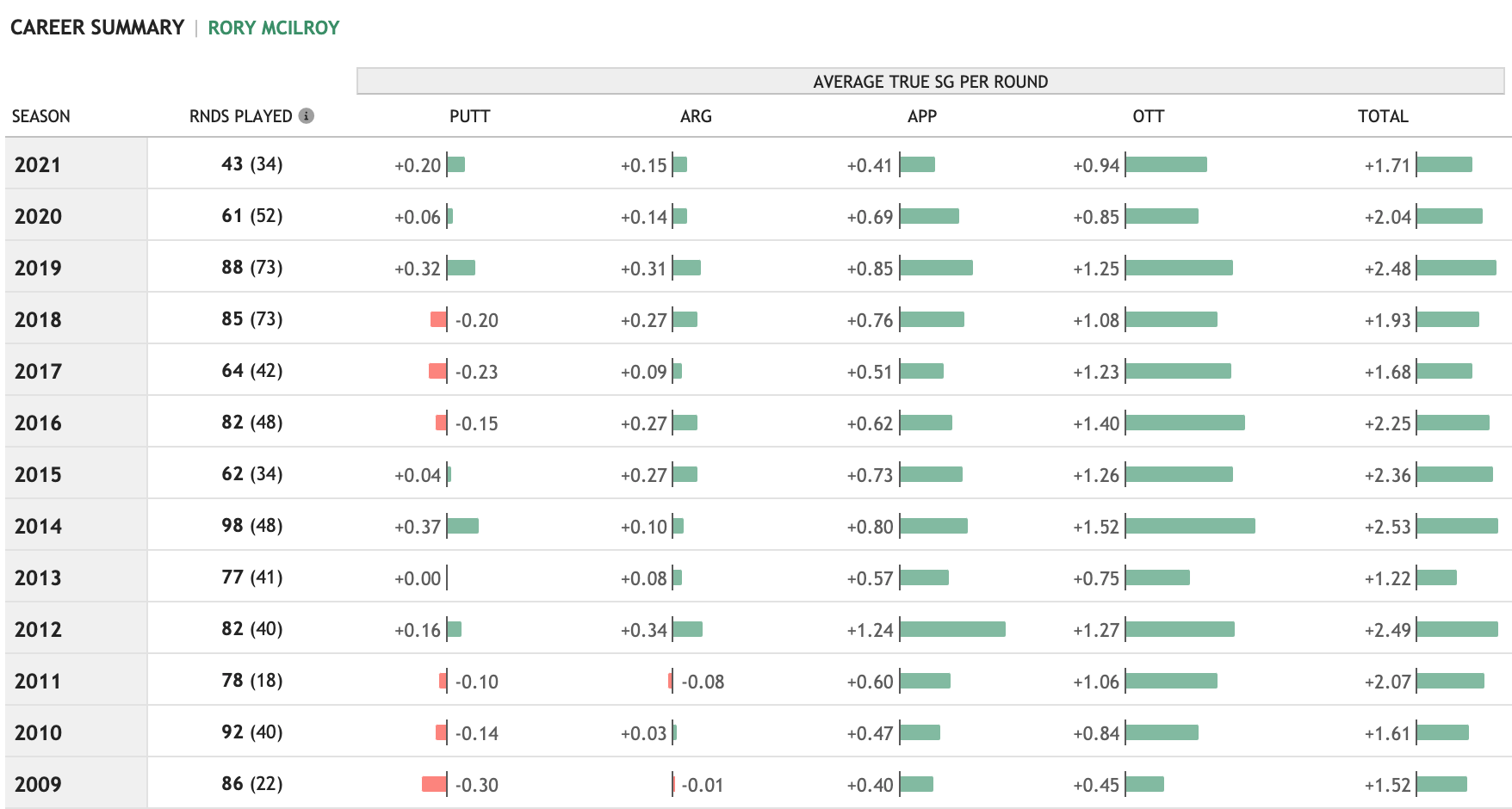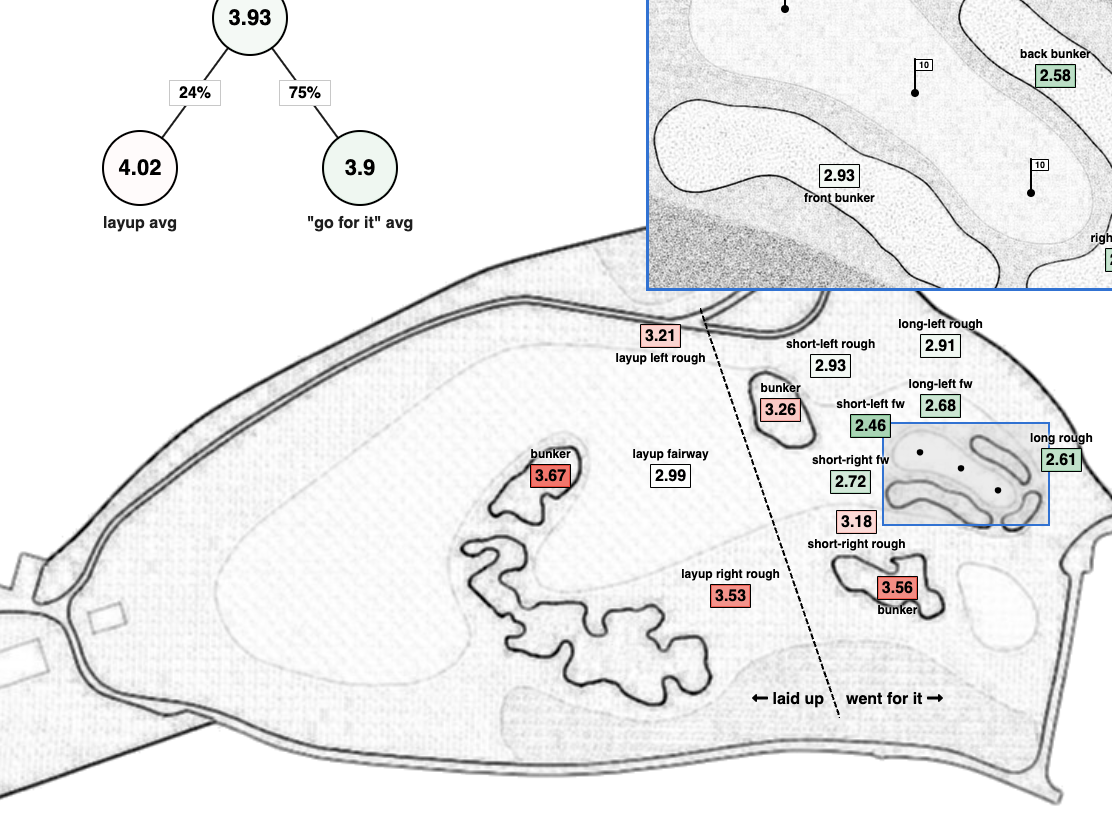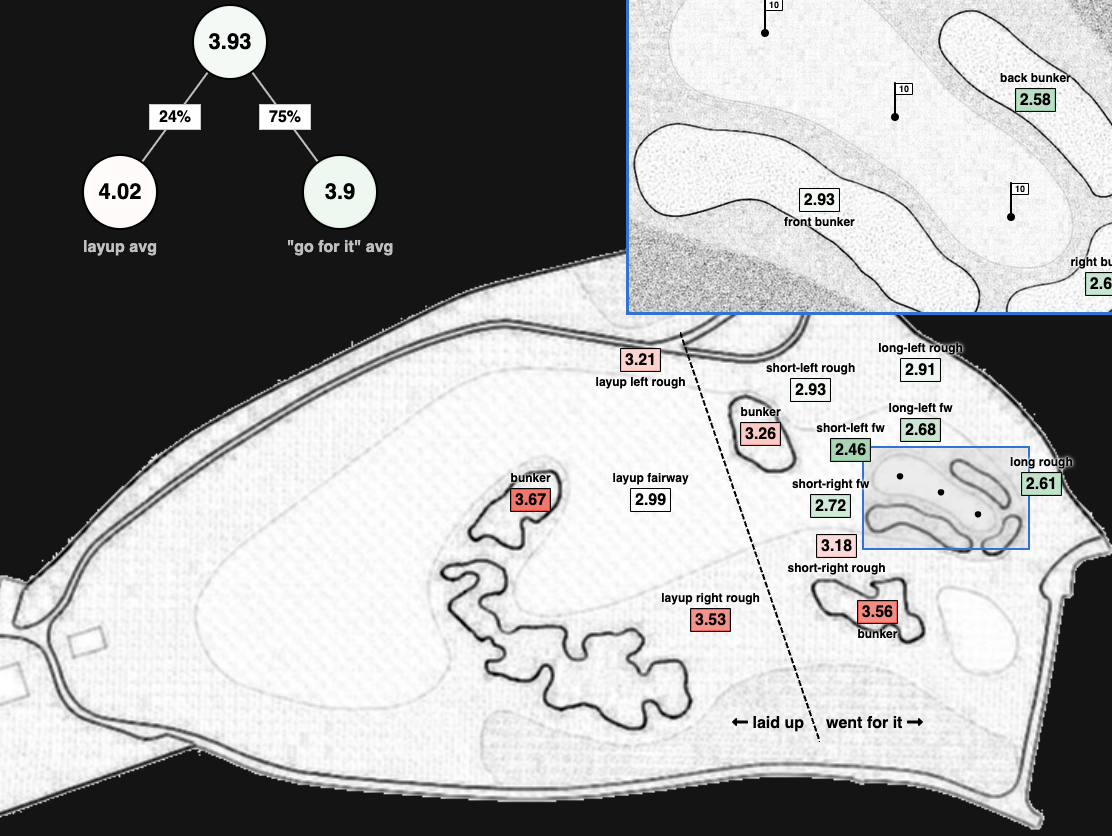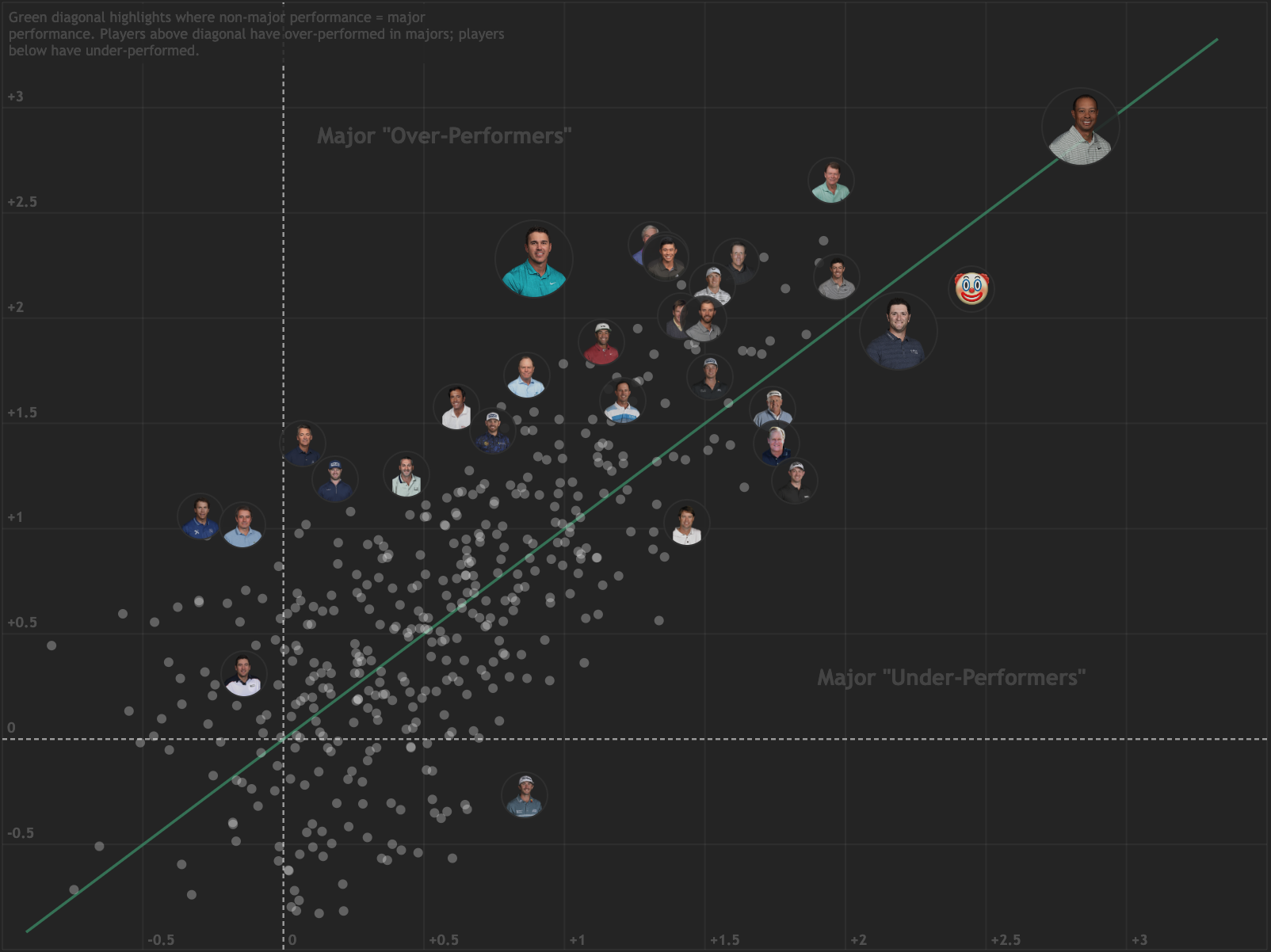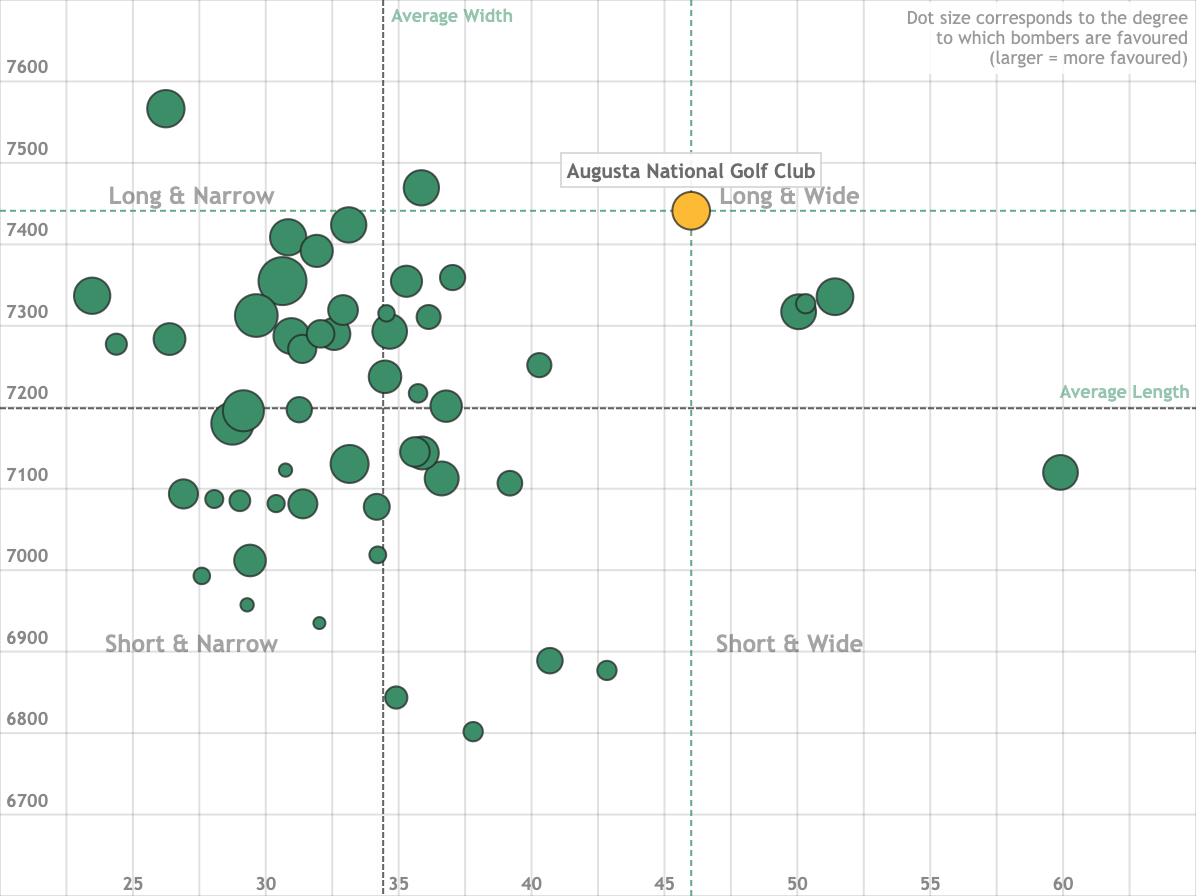
 I.T.N. No. 26
I.T.N. No. 26PUBLISHED April 9, 2021
Inside The Numbers ...
is a brief numerical summary of the current happenings in the world golf, published every Monday — hopefully.
34th RANK
Will Zalatoris spent the entirety of his 2020 season on the Korn Ferry Tour, racking up
an impressive record of high finishes. By the season's end, we had
Zalatoris ranked
34th in the world,
with a predicted skill level 0.87 strokes better (per round) than
the average PGA Tour player.
(The next highest ranked KFT player at the time was Taylor Pendrith, coming in at the 115 spot.)
Since then, despite not having any official PGA Tour status,
Zalatoris has played 14 PGA Tour events and actually managed to elevate his game,
averaging +1.33 true strokes-gained
per round. Heading into the 2021 Masters, Zalatoris
sat 30th in our
rankings with a skill level of +1.15.
In addition to being interesting in its own right, this provides (a small amount of) validation for our model. Despite playing on two different tours in 2020 and 2021, our model deemed the quality of Zalatoris' performances in the two years to be fairly similar. Assuming his true skill level didn't change drastically in that time period, this can be taken as a sign that we are properly assessing the relative field strength differences between the Korn Ferry and PGA Tours.
In addition to being interesting in its own right, this provides (a small amount of) validation for our model. Despite playing on two different tours in 2020 and 2021, our model deemed the quality of Zalatoris' performances in the two years to be fairly similar. Assuming his true skill level didn't change drastically in that time period, this can be taken as a sign that we are properly assessing the relative field strength differences between the Korn Ferry and PGA Tours.
+2.5 STROKES-GAINED PER ROUND
Since returning from the pandemic-induced break last June, a beefed-up Bryson DeChambeau has captivated
golf fans with his distance-at-any-cost (even his digestive system) strategy.
In this stretch Bryson accumulated an impressive 3 wins, highlighted by his dominant U.S. Open win last fall.
So, this experiment has surely been a resounding success, right? Not so fast:
Prior to his distance revolution, DeChambeau's best 50-round moving average of adjusted strokes-gained was +2.5 (this is also typically the level one needs to maintain to be the best player in the world at any given moment). Bryson achieved this initial peak in early 2019, driven by a well-balanced game that included sustained performance near the top-10-in-the-world benchmark for putting, approach, and off-the-tee play. The new big-hitting Bryson also achieved a similar +2.5-strokes-gained-per-round peak after his win at Winged Foot, but has since fallen off a bit. While DeChambeau is gaining significantly more strokes off-the-tee now than before, his approach game has suffered, recently falling to the level of an average PGA Tour pro.
So has Bryson solved golf? Maybe, but we aren't even convinced he's the best version of himself yet.
So, this experiment has surely been a resounding success, right? Not so fast:
Prior to his distance revolution, DeChambeau's best 50-round moving average of adjusted strokes-gained was +2.5 (this is also typically the level one needs to maintain to be the best player in the world at any given moment). Bryson achieved this initial peak in early 2019, driven by a well-balanced game that included sustained performance near the top-10-in-the-world benchmark for putting, approach, and off-the-tee play. The new big-hitting Bryson also achieved a similar +2.5-strokes-gained-per-round peak after his win at Winged Foot, but has since fallen off a bit. While DeChambeau is gaining significantly more strokes off-the-tee now than before, his approach game has suffered, recently falling to the level of an average PGA Tour pro.
So has Bryson solved golf? Maybe, but we aren't even convinced he's the best version of himself yet.
25 UNDER PAR
One of the things we've worked hard to get correct in our live predictive
model is the uncertainty in future scoring conditions. That is, to be able to answer
questions such as: how likely is it that Augusta National plays to a scoring average
below 70 tomorrow? Answer (as you already know): not very likely.
This uncertainty has important
implications for predicting any outcome of a golf tournament, but it's particularly
noticeable when trying to predict the cutline or the winning score. In our
25,000 most recent simulations of the remaining two rounds of the Masters,
the most likely winning scores were 10 under (16%), 11 under (15%), and 9 under (13%).
However, in 2 of those simulations, 25 under par was the
winning score! (At the other extreme, 1 under par was the winning number in a single simulation!)
This might sound crazy — it would require, for example, Justin Rose to shoot back-to-back
63s — but if you made the players play this weekend 25k times (and allow course conditions and weather
to vary each time), some weird things
will be bound to happen.
13 CONSECUTIVE SEASONS
If you weren't looking at results, and were only going by the media's
recent coverage of Rory McIlroy,
you could be excused for thinking he was on the brink of losing his card.
While the standards for Rory are understandably high,
it seems like the media has been overly harsh on the Northern Irishman.
Heck! Based on recent interviews it seems even Rory himself
is starting to believe he may not be able to regain his form.
Let's take a step back and look at McIlroy's 2021 in the broader context of his career. Shown below is Rory's strokes-gained performance by season since he started playing on the PGA Tour in 2009:
McIlroy has been a model of consistency, averaging over +1.2 true strokes-gained per round in 13 consecutive seasons (including the current season). There's no doubt that Rory is in a bit of a slump right now, but he experienced stretches like this in 2013 and 2017. Interestingly, both of McIlroy's previous slumps were followed by exceptional stretches of golf: winning back-to-back Majors in 2014, and Player of the Year over Brooks Koepka in 2019.
Let's take a step back and look at McIlroy's 2021 in the broader context of his career. Shown below is Rory's strokes-gained performance by season since he started playing on the PGA Tour in 2009:
McIlroy has been a model of consistency, averaging over +1.2 true strokes-gained per round in 13 consecutive seasons (including the current season). There's no doubt that Rory is in a bit of a slump right now, but he experienced stretches like this in 2013 and 2017. Interestingly, both of McIlroy's previous slumps were followed by exceptional stretches of golf: winning back-to-back Majors in 2014, and Player of the Year over Brooks Koepka in 2019.
I.T.N. ARCHIVE
RECOMMENDED BLOGS
Recent Blog Posts
Model Talk Blog
Does our model overvalue leaders?

 Data Visualization Blog
Data Visualization Blog
Skill Distribution of Major Champions
